|
 Inocybe luteobulbosa var. luteobulbosa Inocybe luteobulbosa var. luteobulbosa
SynonymsInocybe luteobulbosa
BiostatusPresent in region - Indigenous. Endemic
Images (click to enlarge)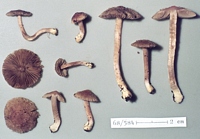
Caption: 68/584: Inocybe luteobulbosa
Owner: Egon Horak | 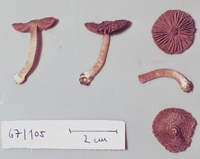
Caption: 67/105: Inocybe luteobulbosa
Owner: Egon Horak | 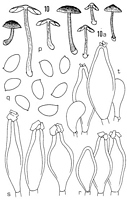
Caption: Fig. 10. Inocybe luteobulbosa (type): p,
carpophores; q, spores; r, cheilocystidia; s, pleurocystidia; t, caulocystidia.
Fig. 10a. Inocybe luteobulbosa var. volvata
(type): carpophores. | 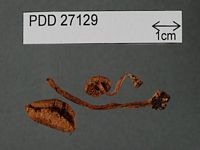
Caption: Dried type specimen
Owner: Herb PDD | 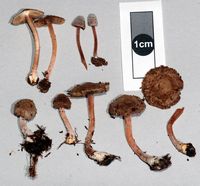
Owner: J.A. Cooper | 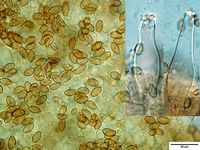
Owner: J.A. Cooper | 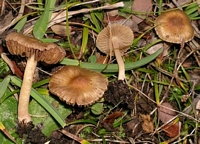
Owner: J.A. Cooper | 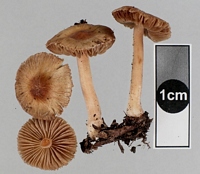
Owner: J.A. Cooper | 
Caption: spores and cheilocystidia
Owner: J.A. Cooper | 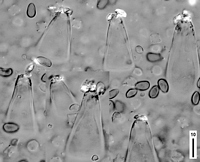
Caption: pleurocystidia
Owner: J.A. Cooper |
Article: Horak, E. (1978) [1977]. Fungi Agaricini Novaezelandiae. VI. Inocybe (Fr.) Fr. and Astrosporina Schroeter. New Zealand Journal of Botany 15(4): 713–747 (http://www.rsnz.org/publish/abstracts.php).
Description: Pileus -35 mm diam., convex becoming umbonate-convex
to campanulate; light brown, hazel-brown, or yellow-brown, at first densely
covered with sulphur-yellow fibrils from the veil, washed off in aged carpophores;
fibrillose, towards the estriate margin rimose, disc often becoming squamulose,
dry. Lamellae adnate to adnexed, crowded (L 20-26, 1 -5), ventricose; grey-beige
to brown, white fimbriate edges. Stipe 20-60 x -5(8) mm, cylindrical, attenuated
towards the apex, base bulbous or clavate, rarely submarginate; beige soon turning
pink or reddish brown, base densely covered with yellow fibrils or a membranous
persistent volva (68/333, 68/622); pruinate all over, cortina absent, dry, solid,
single in groups. Context brownish in pileus, reddish brownish in stipe, white
to yellowish in base of stipe. Odour not distinctive.
Spores 6.5-8.5 x 4.5-5.5 µm, amygdaliform,
smooth, brown. Basidia 18-25 X 6-8 µm, 4-spored. Cheilo- and pleurocystidia
35-70 X 12-25 µm, fusoid, metuloid (-3 µm diam.), encrusted, hyaline. Caulo-cystidia
similar but larger. Cuticle a cutis of cylindrical hyphae (4-10 µm diam.), encrusted
with yellow-brown pigment. Clamp connections present.
Habitat: On soil, among Sphagnum, or on rotten
wood in Nothofagus forests (N. fusca, N. cliffortioides). New
Zealand.
|